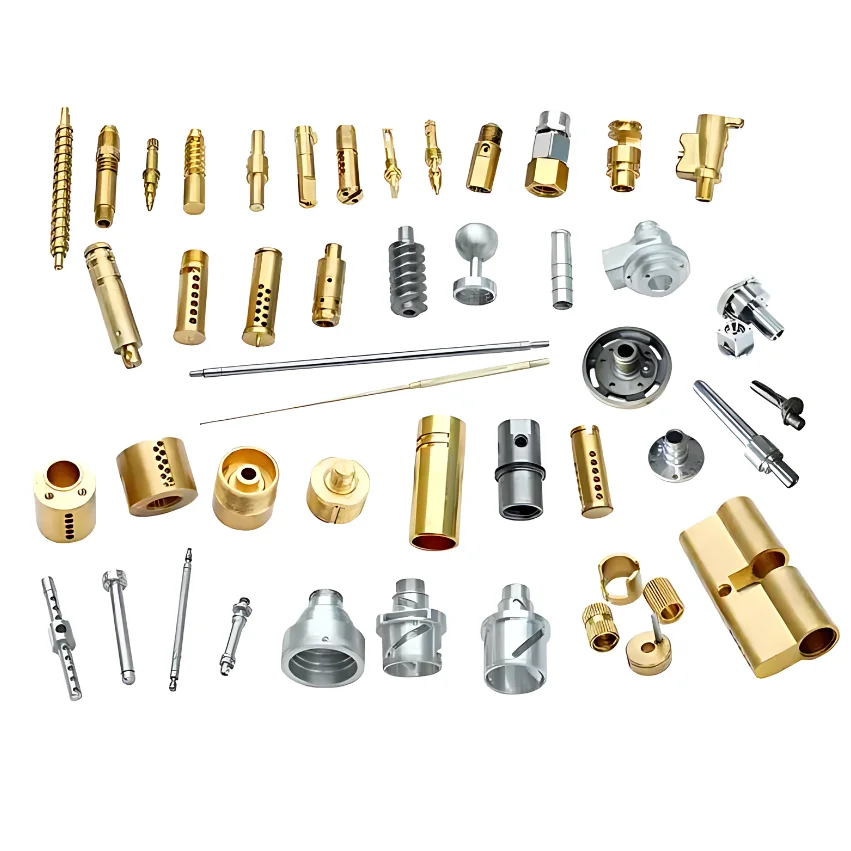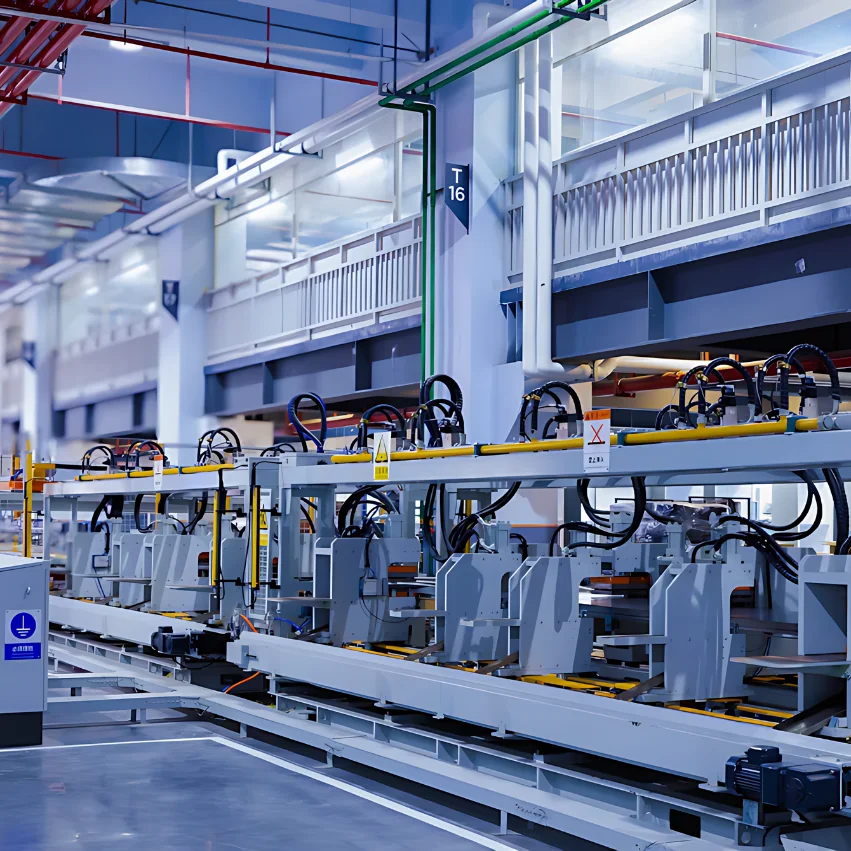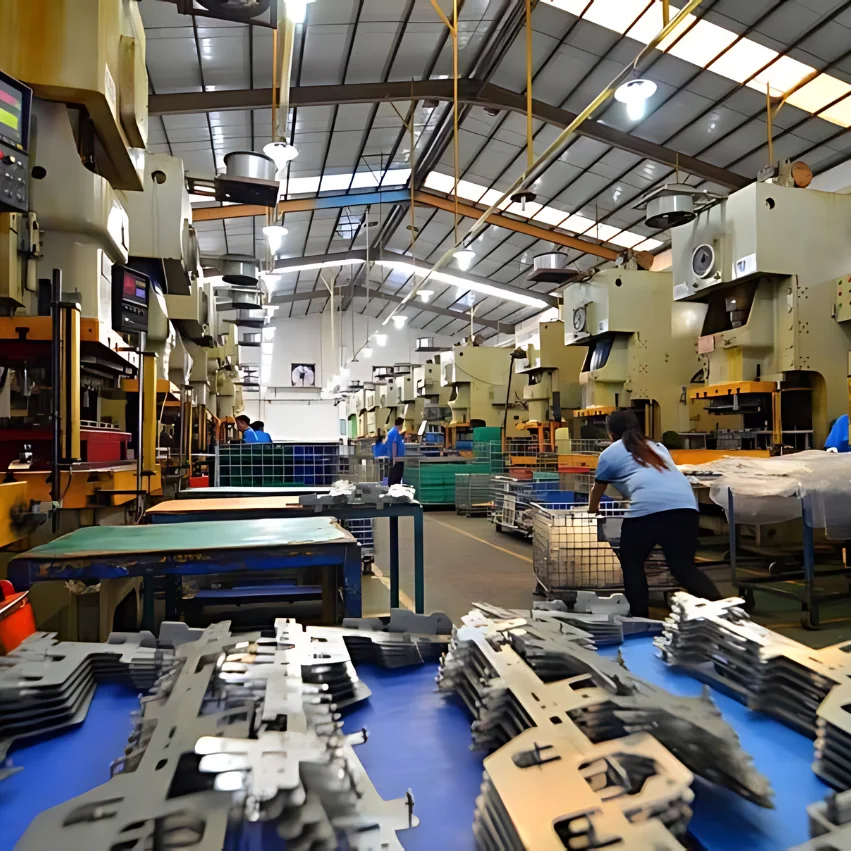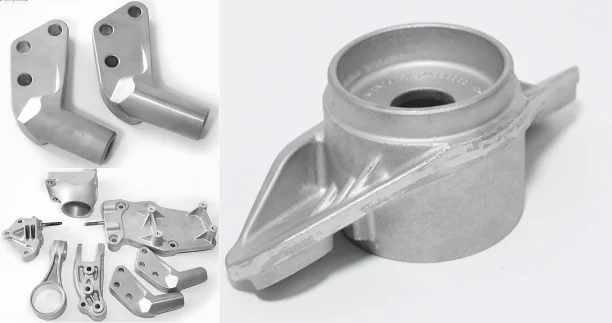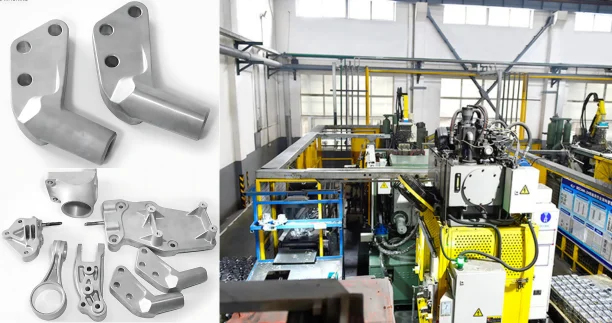What is Stainless Steel?
Austenitic Stainless Steel
Austenitic stainless steels offer excellent formability and weldability, enabling the fabrication of complex structures without losing strength. They also maintain their mechanical properties across a broad temperature range, making them versatile for use in both high and low-temperature environments and ensuring reliable performance under various conditions.
Advantages
- Corrosion Resistance: High chromium and nickel content provide excellent resistance to a wide range of corrosive environments.
- Formability: Its malleable structure allows for easy shaping and forming into complex designs.
- Weldability: It can be effectively welded with all standard techniques, making it ideal for structural applications.
- Non-Magnetic: It remains non-magnetic in its annealed state, useful for electronic and medical applications.
- High Toughness: Maintains strength and durability, even at very low temperatures.
- Temperature Resistance: Suitable for high-temperature applications, ensuring performance in heat-intensive environments.
Common types
- 304 Stainless Steel: The most widely used austenitic stainless steel, known for its excellent corrosion resistance and value. It contains 18% chromium and 8% nickel, making it ideal for general corrosion-resistant applications and environments. It is extensively used in kitchen equipment, appliances, and architectural trim.
- 316 Stainless Steel: Contains 16% chromium, 10% nickel, and 2% molybdenum, which enhances its resistance to chloride corrosion compared to type 304. This makes it suitable for more hostile environments such as marine conditions and industrial chemical processing.
- 310 Stainless Steel: Known for its high chromium and nickel content, making it highly resistant to high temperatures and oxidation. It is commonly used in furnace parts and heat treatment equipment.
- 321 Stainless Steel: Similar to 304 but includes titanium to prevent carbide precipitation during welding. This makes it suitable for applications up to 900°C, where it is used in aircraft exhausts and manifolds.
- 347 Stainless Steel: Like 321, contains stabilizing elements, in this case, niobium and tantalum. Suitable for continuous service at temperatures up to 870°C, it is used in heavy gauge components and heat exchangers.
No matter what industry you belong to, if you need to have sheet metal materials processed, you can contact us, as we provide precision metal stamping services and machining services to a diverse clientele across multiple industries.
Ferritic Stainless Steel
Ferritic stainless steels are characterized by high chromium and low carbon, magnetic properties and high corrosion resistance. Low nickel content makes them cost-effective, while the addition of elements such as chromium, molybdenum, niobium and titanium enhances their toughness and creep resistance. Resistance to stress corrosion cracking and brittleness is particularly outstanding, making them suitable for cookware and automotive parts. The economic benefits and lower ductility of ferritic stainless steels distinguish them from austenitic stainless steels.
Advantages
- Excellent Corrosion Resistance: Highly resistant to corrosion and oxidation, especially in moist and chemically active environments.
- Magnetic Properties: Inherently magnetic, making them suitable for applications requiring magnetic functionality such as in motors and electronics.
- Cost-Effectiveness: Generally cheaper than other stainless steels due to lower nickel content.
- Good Weldability: Capable of being welded effectively, although not as well as austenitic grades.
- High Thermal Conductivity: Better suited for applications involving heat transfer compared to austenitic steels.
- Low Thermal Expansion: Less prone to expanding under temperature changes, ensuring dimensional stability.
- Strong Resistance to Stress Corrosion Cracking: Particularly resistant to stress corrosion cracking, especially in chloride environments.
Common types
- Type 430: One of the most widely used ferritic stainless steels, known for good corrosion resistance and formability. It’s often used in domestic appliances, automotive trim, and interior architectural features.
- Type 409: Known for its affordability and decent corrosion resistance, Type 409 is commonly used in automotive exhaust systems and heat exchangers.
- Type 441: This type offers better high-temperature stability and corrosion resistance than 409, making it suitable for automotive exhaust applications and other high-temperature environments.
- Type 434: Similar to Type 430 but includes molybdenum to enhance corrosion resistance. It’s used in automotive trim and parts, as well as in some architectural applications.
- Type 436: This type has added molybdenum and niobium for improved corrosion resistance and is used in more aggressive environments where higher resistance is necessary.
Martensitic Stainless Steel
Martensitic stainless steel is an alloy characterized by its martensite crystal structure, allowing it to be hardened through heat treatment and aging. Other primary stainless steel types include austenitic, ferritic, duplex, and precipitation-hardened varieties.
Advantages
- High Hardness and Strength: Suitable for wear-resistant applications like cutting tools and blades due to its hardenability.
- Magnetic Properties: Essential for applications requiring magnetic functionality, such as motors and actuators.
- Moderate Corrosion Resistance: Provides adequate resistance where higher strength and hardness are prioritized.
- Cost-Effectiveness: Less expensive than austenitic and duplex steels, making it a cost-efficient choice for less corrosive environments.
- Heat Treatability: Can be heat-treated to customize hardness and strength for specific needs.
Common types
- Type 410: One of the most basic and widely used martensitic stainless steels. It offers good corrosion resistance and high strength, making it suitable for applications such as cutlery, food industry machinery, and turbine parts.
- Type 420: Known for its higher carbon content which provides enhanced hardness and strength. This type is often used for surgical instruments, dental and surgical equipment, and high-quality knife blades.
- Type 440C: This type has even higher carbon content than Type 420, offering greater hardness and wear resistance. It is commonly used for ball bearings, valve parts, and high-end knives.
- Type 431: This steel is known for its excellent toughness and is slightly more corrosion resistant than other martensitic grades. It’s used in aircraft and marine parts, as well as in the chemical industry.
- Type 416: Easier to machine than other martensitic grades due to the addition of sulfur which makes it free machining. It is used in applications where ease of machining is crucial, such as nuts, bolts, and pumps.
3 Key Differences Between Stainless Steel Grades
Corrosion Resistance
- Austenitic Stainless Steel: Exceptional corrosion resistance, suitable for critical applications in various industries.
- Ferritic Stainless Steel: Good corrosion resistance, commonly used in automotive exhaust systems and marine applications.
- Martensitic Stainless Steel: Moderate corrosion resistance, suitable for applications where corrosion is not a primary concern.
Mechanical Properties
- Austenitic Stainless Steel: Maintains mechanical properties across a wide temperature range, with good formability and weldability.
- Ferritic Stainless Steel: Favorable thermal expansion behavior, offering good ductility, formability, and ease of fabrication.
- Martensitic Stainless Steel: High strength and hardness achieved through heat treatment processes, with superior wear resistance.
Applications
- Austenitic Stainless Steel. Widely used in food processing, chemical processing, pharmaceuticals, and architecture, as well as consumer products like kitchen sinks and automotive trim.
- Ferritic Stainless Steel. Commonly found in automotive exhaust systems, household appliances, architectural structures, and marine applications.
- Martensitic Stainless Steel. Primarily used in applications requiring high strength, hardness, and wear resistance, such as cutlery, industrial equipment, and automotive components.
Conclusion
Each grade of stainless steel has unique properties and characteristics. Understanding the differences between austenitic, ferritic, and martensitic stainless steels allows you to make decisions based on corrosion resistance, strength, formability, and environmental suitability. By carefully evaluating these factors, you can ensure optimal performance and longevity for your project.

